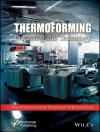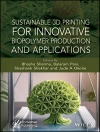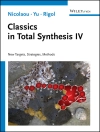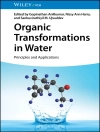Carbon-carbon bond formations and functional group transformations are the most fundamental reactions for the construction of molecular frameworks and are at the forefront of organic chemistry research. The Morita-Baylis-Hillman (MBH) type reactions possess the two most important requirements – atom economy and generation of multi-functional groups. The last decade has seen exponential growth of the MBH reaction and its applications. In fact, it is already one of the most powerful carbon-carbon bond-forming methods widely used in organic synthesis. Since the 1990s, more and more research groups have initiated work on different aspects of the MBH reaction. These have focused on the scope of the substrates, novel catalysts (especially chiral catalysts), reaction mechanisms, and synthetic applications. Consequently, there is now a need for a reference detailing the chemistry of this important reaction. This unique book summarizes the MBH reaction, aza-MBH reaction and asymmetric MBH/aza-MBH reaction including the latest research and mechanistic investigations. It provides a complete overview of MBH-type reactions aimed at synthetic organic chemists of all levels within academia and industry. The chapters cover the; origin and growth of the Morita-Baylis-Hillman reaction; reactant classes and reaction conditions; catalytic mechanisms; achiral and chiral catalytic systems; transformations of functional groups; use of Morita-Baylis-Hillman adducts and derivatives as starting materials to construct compounds with carbocyclic or heterocyclic frameworks, and the applications of the MBH reaction in synthesizing natural products.
Tabla de materias
Morita-Baylis-Hillman Reaction; Catalytic System for the Morita-Baylis-Hillman Reaction; Transformations of Functional Groups in Morita-Baylis-Hillman Adducts; Morita-Baylis-Hillman Adducts or Derivatives for the Construction of Cyclic Frameworks; The application of Morita-Baylis-Hillman Reaction for the Synthesis of Natural Products
Sobre el autor
Feijun Wang was born in Shangyu, Zhejiang Province, People’s Republic of China, in 1978. He received his B.Sc. degree in 2001 and his M.Sc. degree in 2004 form China University of Mining and Technology. After obtaining his Ph.D degree in the field of synthesis of novel oxazoline ligands with a biphenyl backbone and their applications in asymmetric catalysis in 2007 from School of Chemistry and Chemical Technology, Shanghai Jiao Tong University, he joined the group of Professor Min Shi. His research program is focused on the development of novel rotation restricted ligands and their applications in asymmetric catalysis.












